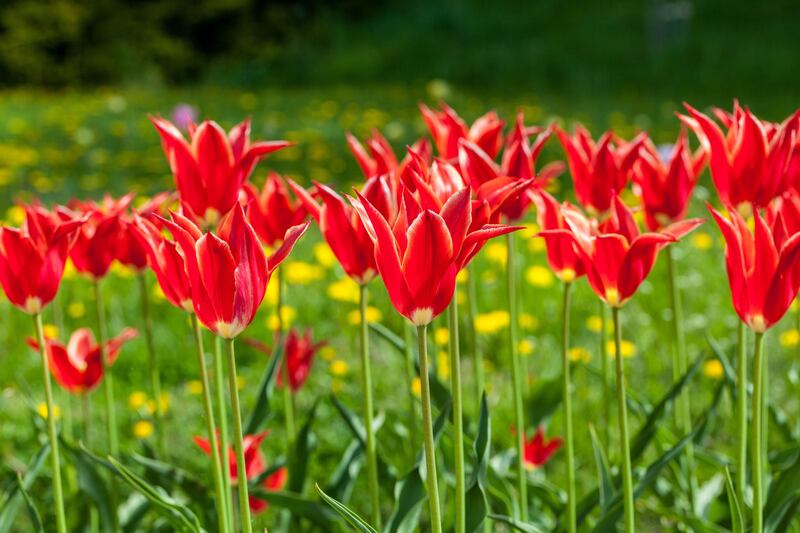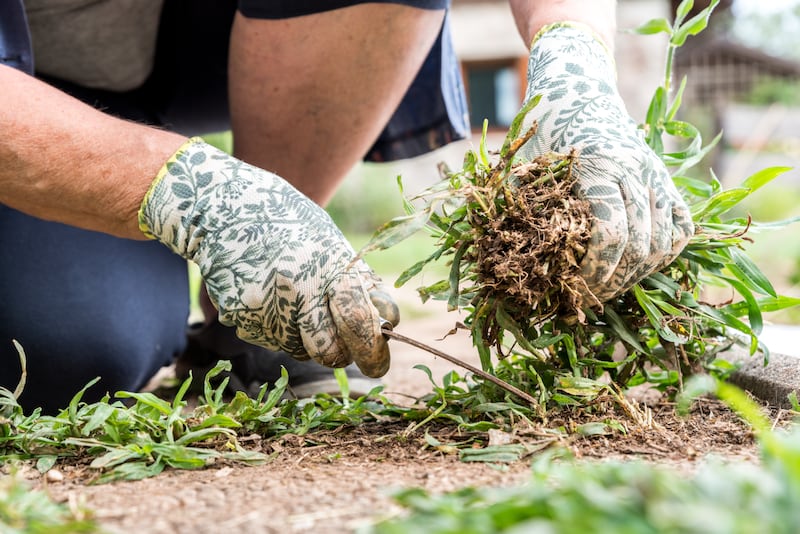I love April in the garden. Love its sounds, its new-born scents, its promise that somehow all will be good. If it was human, it would be a young child giggling. If it was music, it would be U2′s Beautiful Day, or Sibelius’s Symphony No 3. If it was a smell, it would be of bluebells or freshly-hatched tomato seedlings, and if it was a taste, it would be of rhubarb or wild garlic. Taking its name from the Latin word aperire, meaning “to open”, it is the month of tulips, freshly-dug soil, fruit blossom, baby seed potatoes buried in the ground like spells, swallows arriving, queen bumble bees taking to the wing, and snake’s head fritillaries quivering in the breeze.
It is, of course, also the busiest month of the gardening year, where the days get longer but the to-do list never shortens. But don’t let that overwhelm you. The trick to getting as much done as possible, as I’ve learned, is to prioritise and be prepared.
Seed-sowing, for example, comes at the very top of that list, and can’t be delayed if you want plenty of strong, healthy productive plants that will bear flowers and/or fruit throughout the summer.

To speed things along, have everything you’ll need easily to hand. That means pots, seed trays, modular trays and small pots for growing on baby seedlings to a decent ‘transplant’ size, a good quality seed compost, fine-grade vermiculite, plant labels and a fine-tipped waterproof pen, as well as clear plastic freezer bags or sheets of glass to lock in heat and humidity. Ideally some form of bottom heat, whether in the form of an electric propagator, heated soil cables or a heat mat (see fruithillfarm.com , mrmiddleton.com , quickcrop.ie ) will also make a huge difference.
Rail disruption hell: ‘There has not been one day without delays on the train’
The top 25 women’s sporting moments of the year: top spot revealed with Katie Taylor, Rhasidat Adeleke and Kellie Harrington featuring
Father’s U-turn in a will left son who took care of him with a pittance
The Guildford Four’s Paddy Armstrong: ‘People thought I was going to be bitter and twisted when I came out of prison’
Another serious challenge to plants at this time of year is attack by slugs and snails
To maximise light penetration and strong, healthy growth, as well as to reduce the risk of overwintering pests and diseases, clear away weeds, dead plants and debris in glasshouses, polytunnels and cold frames and wash them down well in advance.
Most importantly, use the freshest, high-quality seed you can. Along with all good garden centres, recommended Irish online suppliers include mrmiddleton.com; seedaholic.com; brownenvelopeseeds.com; irishseedsavers.ie; theorganiccentre.ie; greenvegetableseeds.com; quickcrop.ie and giy.ie.
As baby seedlings and the new shoots and blossom of plants appear, keeping them healthy and happy is paramount in order not to abruptly fall back in the fast-moving game of Snakes & Ladders that’s gardening at this time of year. So make sure to have plenty of clean horticultural fleece to hand to protect against the sorts of late spring frosts or very cold winds that can knock back or kill seedlings, badly damage the emerging new growth of perennials and tuberous plants such as potatoes and dahlias and blight fruit blossom. A double layer secured in place over vulnerable plants on any very chilly evenings will make all the difference.

Seedlings in particular need regular monitoring over the coming weeks. Once they’ve produced their first set of “true leaves” (the particular shape and arrangement of leaves that’s typical of the species), you’ll need to prick out any pot/tray-raised seedlings into cell trays or individual small pots to keep them hale and hearty. To do this, gently hold the leaves of each seedling (never the stem) and use a pencil to gently prise out the root system before quickly transplanting it into its new, roomier accommodation, finishing off with a light watering. Likewise, seedlings direct-sown outside will typically need to be thinned in the coming weeks to give them sufficient space to grow well.
The other great challenge that seedlings and young plants inevitably face at this time of year is their need for just enough- but not too much - water
Another serious challenge to plants at this time of year is attack by slugs and snails. As they hungrily emerge from winter hibernation, all they want is do is to eat and to mate, making it a pressure point in the growing season when quick, effective action is crucial. So keep a very watchful eye out and intercede early when you spot the first signs of damage (examples include nibbled or damaged leaves, gaps in lines of seedlings).
How to manage them sustainably? Along with the occasional use of organically-acceptable kinds of slug pellets (the active ingredient in these is iron phosphate), practicing good garden hygiene will help a lot. This means leaving no weedy growth, dumps of old pots or piles of recently-cleared weeds or leaves (all convenient hiding spaces) near vulnerable plants as well as checking the bases of plant containers regularly. Also keep a beady eye out for their clusters of tiny, silver grey eggs in container-grown plant’s root-balls and rub them loose for birds to eat.

Last but not least, the other great challenge that seedlings and young plants inevitably face at this time of year is their need for just enough- but not too much - water. With seedlings in particular, always water very gently to avoid accidental damage, and aim to keep the compost barely damp rather than sodden. All it takes is one very heavy watering to flatten or snap their fragile stems so use a watering can with a very fine “rose” fitting on the spout. Or if they’re very young or tiny, continue to bottom-water the pots/trays until they’re more robust. By using a very diluted solution of liquid seaweed at this time of year when watering, you can also help to boost healthy growth.
To lessen the time and labour involved in watering plants in the garden or allotment, use organic mulches to lock moisture in. Simple drip-irrigation systems can also make a huge difference, especially in glasshouses and polytunnels. Installing a series of water butts, ideally linked by sections of garden hose and fed by a gravity feed, is yet another valuable, eco-friendly part of the solution. Not only will it make the job of irrigation faster and easier, but the good news is that it’s also far, far better for your plants.
This week in the garden
Make sure to properly ventilate glasshouse, polytunnels and cold frames on sunny days to avoid seedlings and young plants being damaged or killed by quickly soaring temperatures. But as evening approaches, close down windows and vents again to lock in heat.
Keep on top of weeds this month and you’ll save yourself a lot of time and hard slog later in the season. Two of my favourite tools for the job are an oscillating hoe by Glaser (quickcrop.ie) and a weed popper from De Wit (howbertandmays.ie).
Dates for your diary
Continuing until mid-May (garden open 11am-5pm every day except Mondays and Tuesdays), June Blake Garden, Tinode, Blessington, Co Wicklow, ‘A Month of Tulips’, a celebration of one of spring’s most beautiful flowers; juneblake.ie
Tulips are also one of the glories of Patthana Garden, Kiltegan, Co Wicklow, which features in April’s issue of Gardens Illustrated and is open to the public every Sunday until October (Noon-5pm); patthanagardenireland.com






